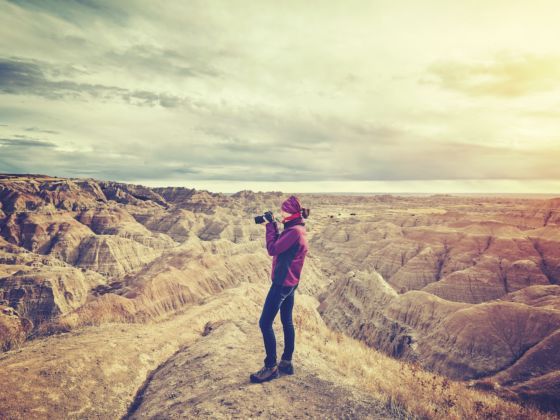South Dakota is where I discovered that I could survive outside the big city.
After growing up in Chicago and spending time in Memphis and New York, I used to think my urbanity was something as essential as water, even while I pined for the too-seldom escape into the wild.
But when I finally put the business side of the George Washington Bridge in the rearview of a U-Haul, I didn’t want to half-step. After New York, a timid westward ebb to some mid-sized city east of the Mississippi would have forever felt like a demotion.
Only full immersion in true ‘flyover country’ would do. Where better to achieve a clean break with the concrete jungle than at the geographic center of the nation — in South Dakota?
And it worked. The cold-turkey Dakota detox worked.
I’ve traveled to the four corners of this state and discovered a love for the land here that stretches far beyond the granite spires and ponderosa-plumed peaks of the Black Hills — a passion that can shuttle away the Goodbye Gotham Blues like pollen on a prairie wind.
I’ve seen that passion for the land in Rocky, a rancher who happily pulled my car out of the gumbo it was mired in beneath Moreau Peak; in the Rosebud-raised Lakota rapper Frank Waln, as he elucidated on the sacredness of the Black Hills for his people.
I’ve seen it while staring at the red-and-yellow-banded moonscapes of Red Shirt Table, in the fog-drunk emerald green of the Coteau des Prairies, and in the vast convex tables of grass beneath the sky that connect these singular places.
This land gets into people’s pores and roots itself into something primal.
Many of the towns within this landscape have “no services,” let alone pretensions. There is culture, though — authentic, homegrown, inspired by place — from the prairie chicken dance at the Crow Creek Wacipi, to the eight-second bull ride at the Scottie Stampede, to the celebrations of folk and bluegrass at Gayville Hall.
And the state’s great artery, uniting them all is The River — the Big Muddy, the Mighty Mo, demarcating “East” and “West River,” where sodbuster country gives way to ranch land.
West River is where the cowboys drove infinite herds across an 80-mile-long, six-mile-wide trail cut through the grass sea to a boom-town-turned-ghost-town called Evarts. From here, ferries hauled the dogies East River to the iron horse, bound for the stockyards of Chicago.
I’ve approached The River a hundred ways, from East and West, and paddled down the middle, and yet it never fails to awe with its brown-green amphibian girth. And though the days of free grass and no fences are long gone, these lands still seem to unravel with an unfence-able feeling of freedom.
It’s a feeling that liberates the land as much as its people.
Unlike in New York or Chicago, artists of the wide open have the privilege of expressing themselves on their own terms, wholly unguided by what goes on at Art Basel, answering only to the earth beneath their feet, with installations as quirky and unpredictable as they are in harmony with their environment — the giant bull head at the Porter Sculpture Park off I-90 in Montrose, or Ken Bell’s matching fleet of orange ’76 Ford LTDs parked in rows along the 212.
Folk art installations like these manage to merge the organicism of Frank Lloyd Wright’s Fallingwater with the aura of the all-American roadside attraction — look no farther than the 12-foot prairie dog in Cactus Flats.
But more than anything, South Dakota is the open — its vast, unpeopled reaches make no tepid compromise with the city, nor do they reject it. They are what they are. To know them might take lifetimes, but you have to start somewhere.
And I’m glad I did, when I did.
